Four smart ways to make your content more readable
Out of the 93% B2B marketers using content marketing, 42% found themselves to be successful. Has content marketing yielded fruits for your brand? If not, then this article is for you.
How often do you end up leaving in-depth, factual and actionable articles halfway? Ever wondered why? They are hard to read.
The primary reason why we go to our favorite websites time and again is because of their readability, they are easy to understand. Your readers have limited time and millions of choices. Every piece of content you produce should add value and keep them hooked until your call to action.

Image Credit emfunkk.tumblr.com
Master these four smart techniques to make your content readable and it’ll instantly start yielding better results.
Headlines
This is the first step to crafting readable content. Grab your user’s attention with a magnetic headline; it makes your piece to stand out. From every 10 people who read the content, eight will go through the headline and only two will read the entire piece.
The goal of the headline is to make people read the entire post. If the headline fails to evoke interest, you are in dark waters. Impress them with the headline, viz. your personal headline.
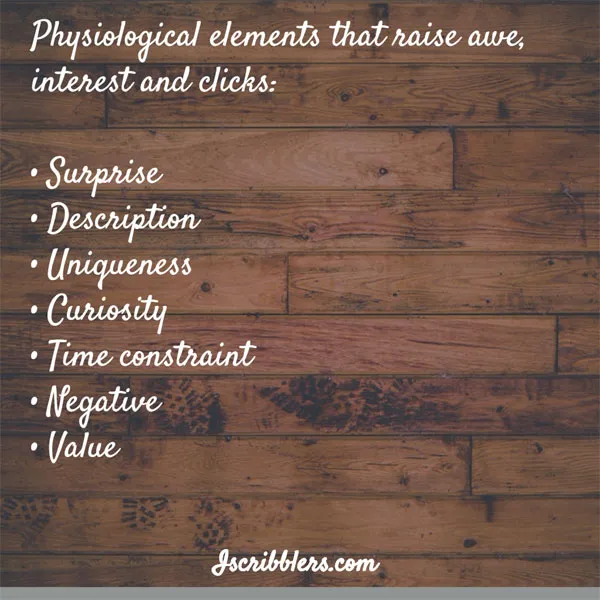
Image Credit Pablo.
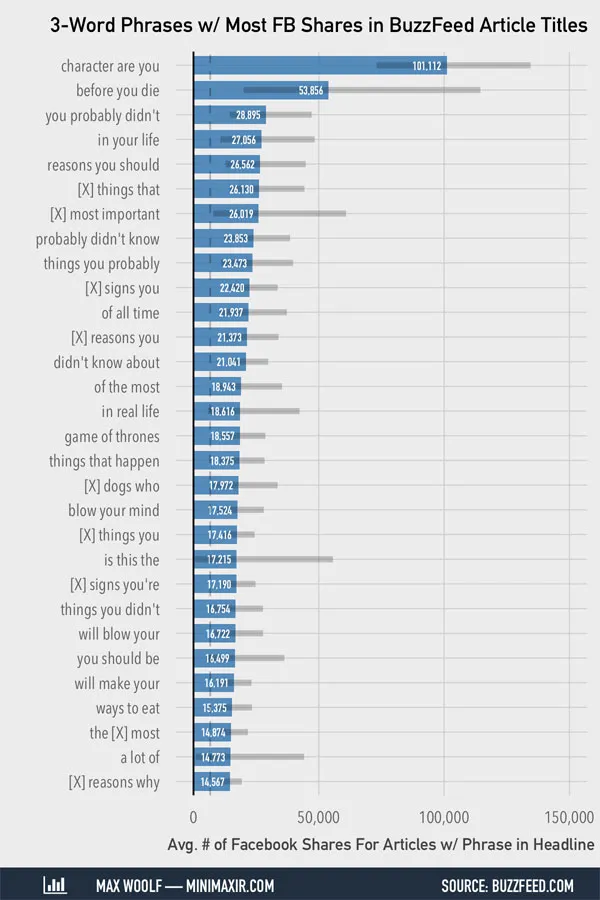
Image Credit minimaxir.com
In Upworthy’s co-founder Peter Koechley’s words, “Headlines are a million times easier to optimize than content and Just as important to virality.”
Conversational tone
How you write is as important as what you write. It is an integral component of readability.
Writing a copy filled with hyped buzzwords makes the reader skeptic and you’ll be unable to gain their trust. To believe in you or your brand they have to connect to everything you write.
The bottom line to make your content easily relatable is write in a conversational tone. Ditch the writing rules taught in school, adopt a conversational tone and you’ll achieve it with practice. This tone is easier to understand as we adopt an internal monologue while reading.
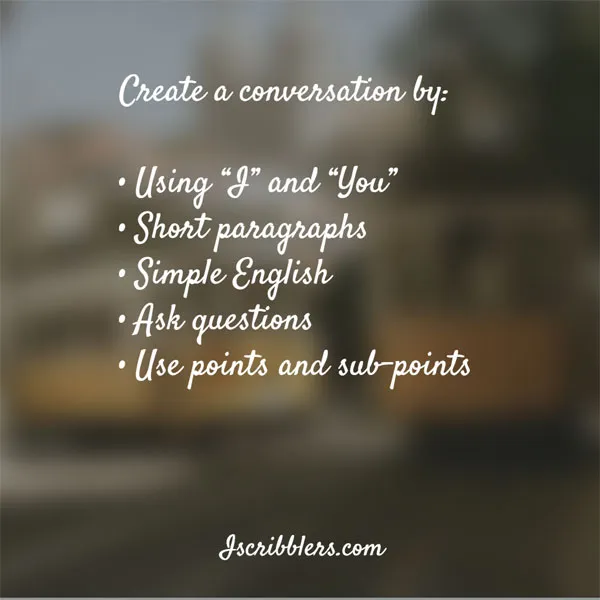
Image Credit Pablo.
As said by Neil Patel, “Use vocabulary that a fifth grader can understand.”
Follow writers whose articles you prefer to read, write under similar lines and with practice you’ll find a voice that suits your writing style.
Length
We often wonder while writing: What should be the ideal length of the post? There are two approaches to go about with this: short-length content (Seth Gordin’s blog) or long-form content (Buffer App’s blog). There is no rule to the perfect post length, but blogs with word length of at least 1500 receive more shares.
A study by Buzzsumo, analyzing the share counts of more than 100 million blog posts for 8 months showed the following result:
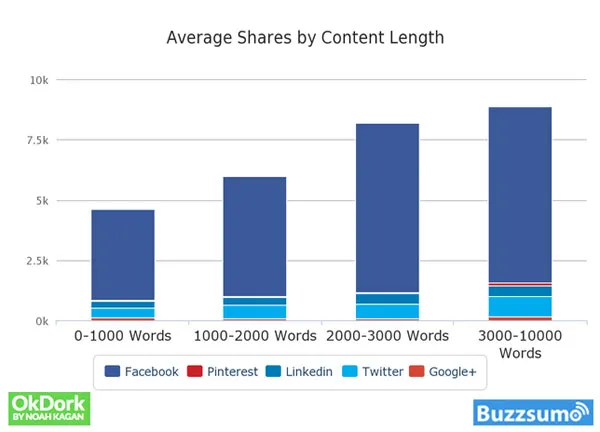
The study shows that the content with 3000–10,000 words gets the maximum average shares. As there is very less competition in the long length category it’s easy to stand out. People are looking for insightful articles to share, so concentrate on creating epic and content-rich long-form posts.
At iScribblers, we write 500–1000 words content for guest post, whereas longer length content is used on LinkedIn Pulse, company blogs, white papers, e-books and research articles.
The solution here is to find the right balance between long and short-form content. Although it may not be possible to create long-length content each day, informing and engaging the audience with bite-sized information is possible multiple times a week.
Present information in multiple formats
An image is equal to a 1000 words and a video equivalent to a million words. While browsing through the website, some of them tend to read the content, some prefer images, while others opt for watching videos.
Thus, include information in multiple formats (image/videos/text) so that audience learns from either of these content forms. No sect of customers should be ignored, hence present your information in various ways.
Each post should be a blend of visuals and text. If you’re adding statistics then support it with diagrams. Every viewer should be able to absorb content in his preferred way of leaning.
Adding visuals can generate up to 94% views on your post. To convert the content into visual format, you need to shed it to the bare bones. Is your visual so simple that the reader can understand the content by merely browsing through it?
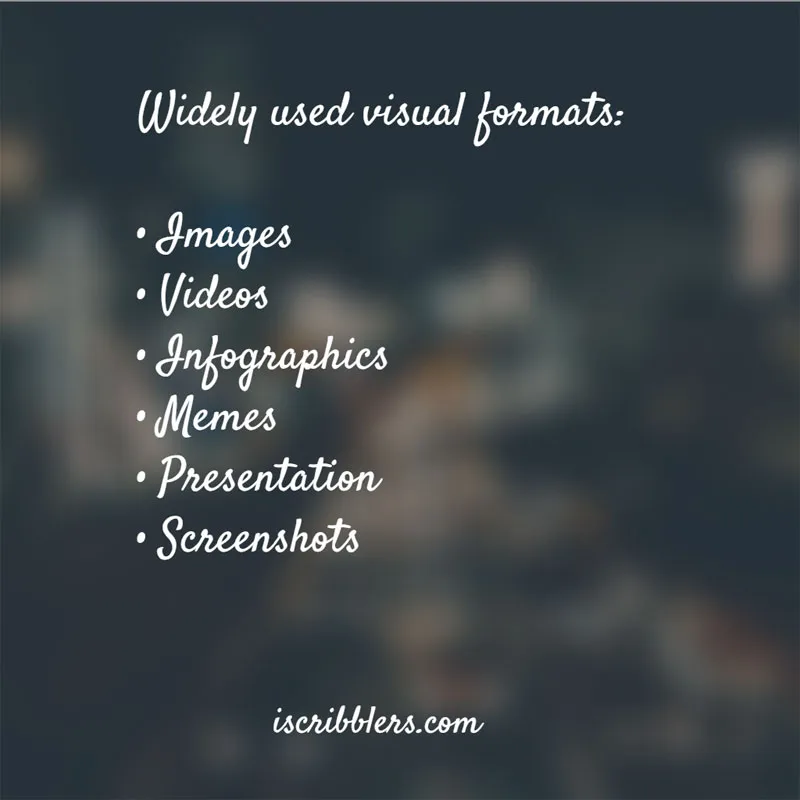
Image Credit Pablo.
While crafting a content piece, search engine optimization (SEO) comes into picture. Rather than optimizing your article for SEO, concentrate on creating content that adds value for the reader. Make other aspects of the website SEO friendly and give a free hand to your imagination in making content more readable. Creating value to establish your thought leadership is as effective as SEO.
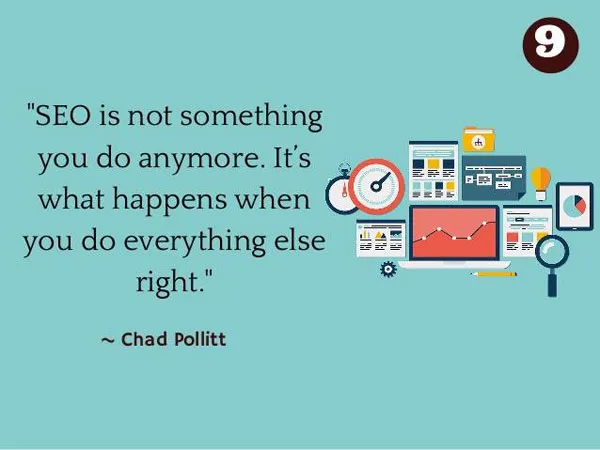
Concentrate on creating readable content, everything else will fall in place by itself.







